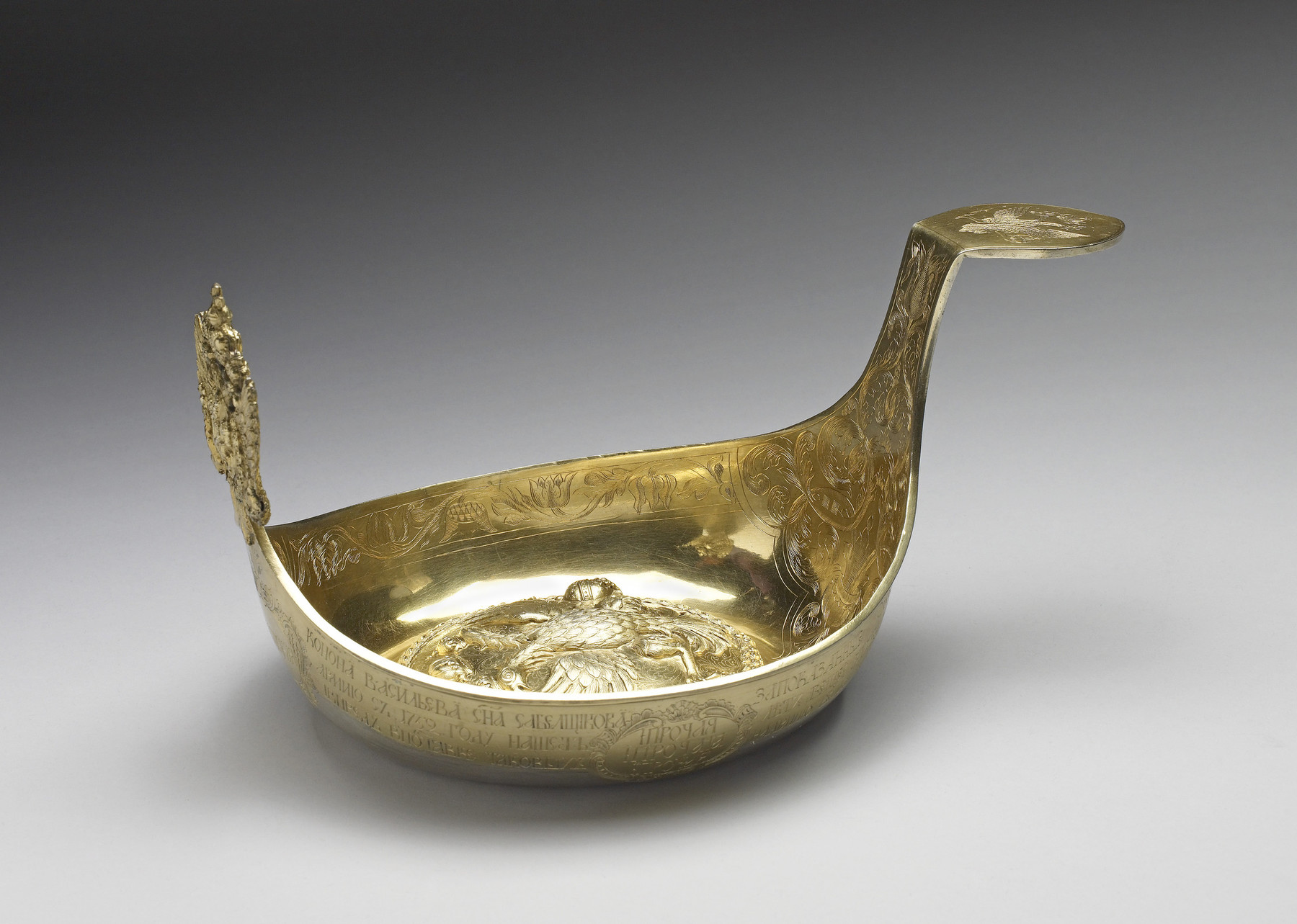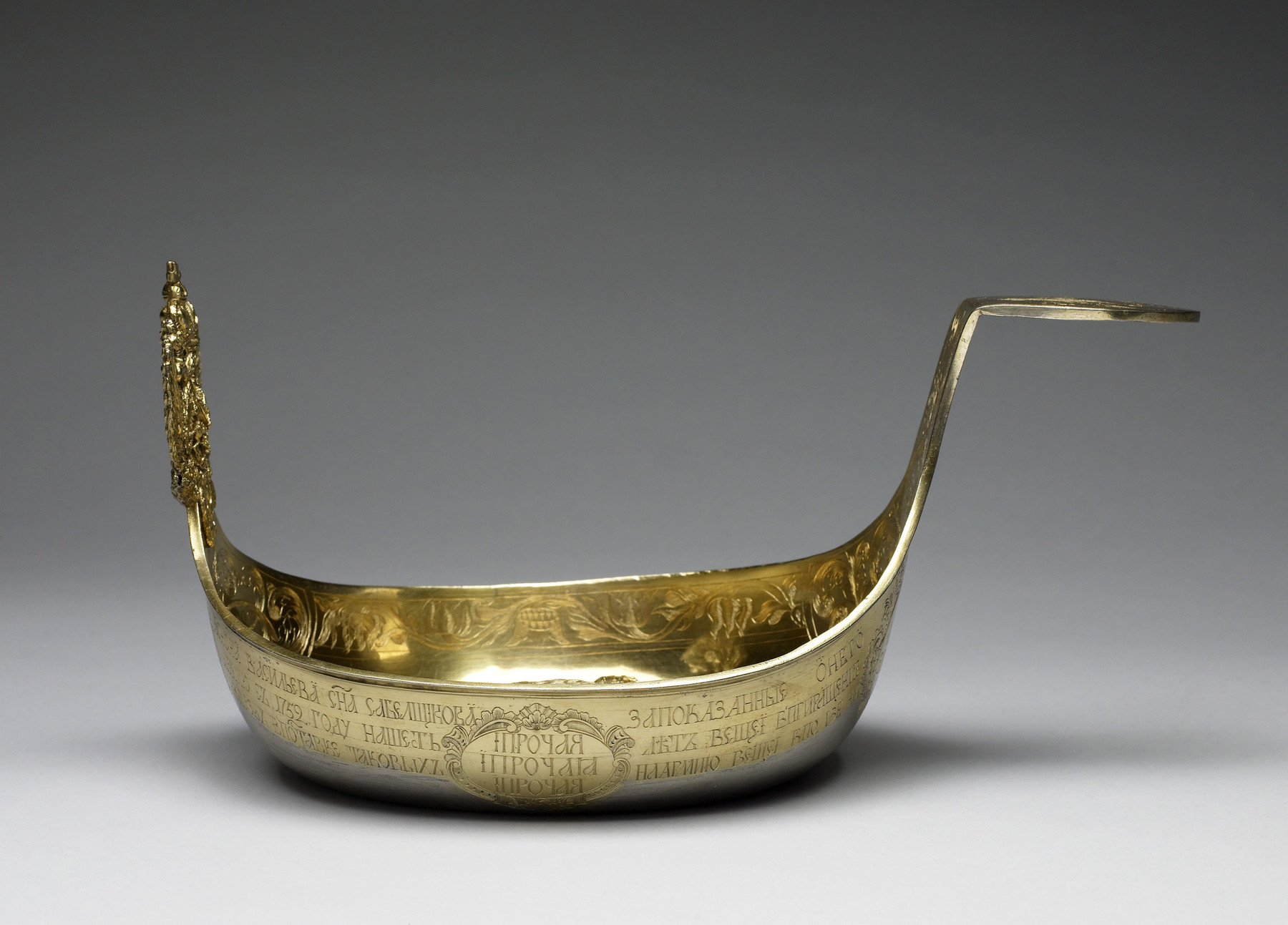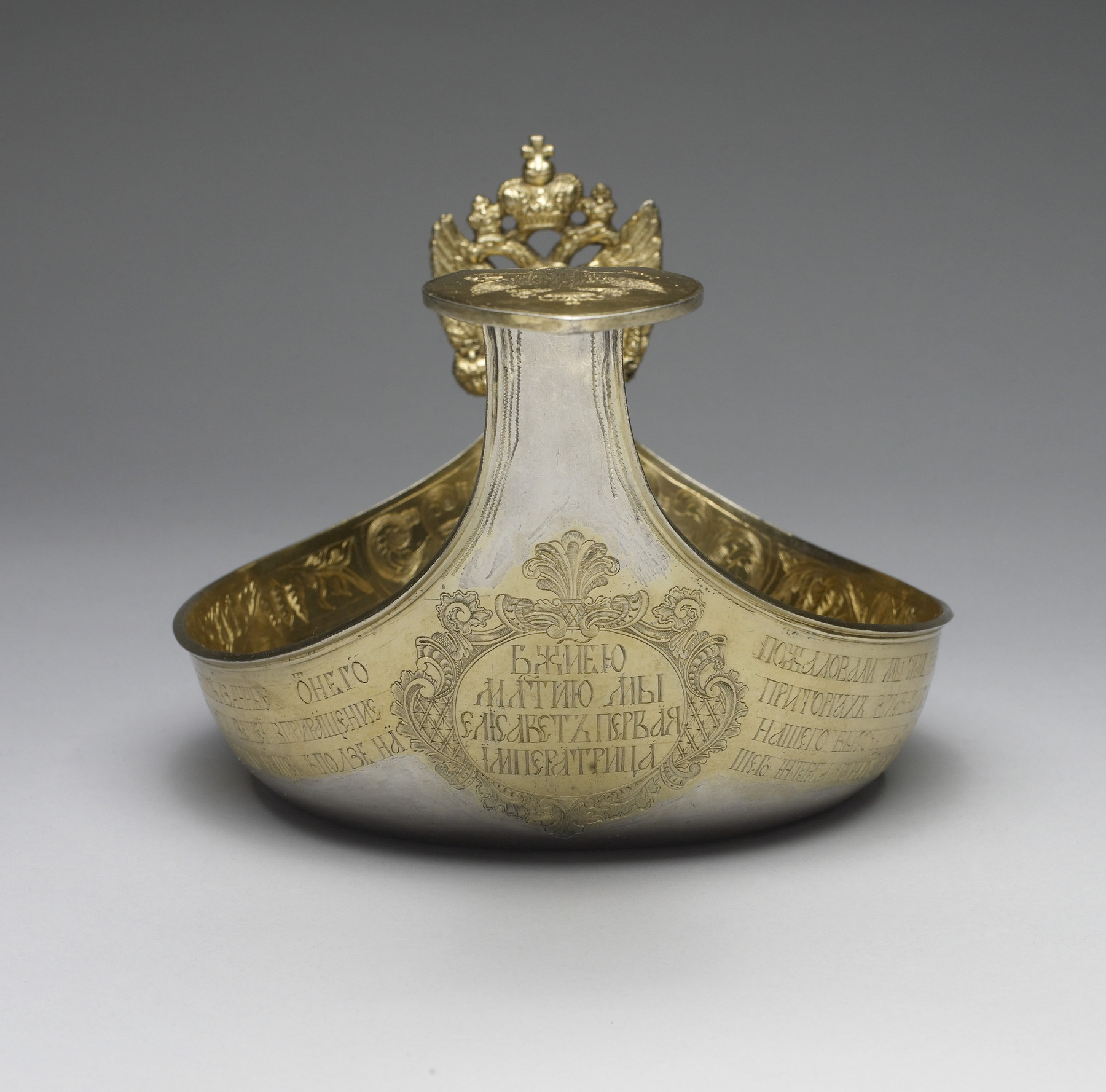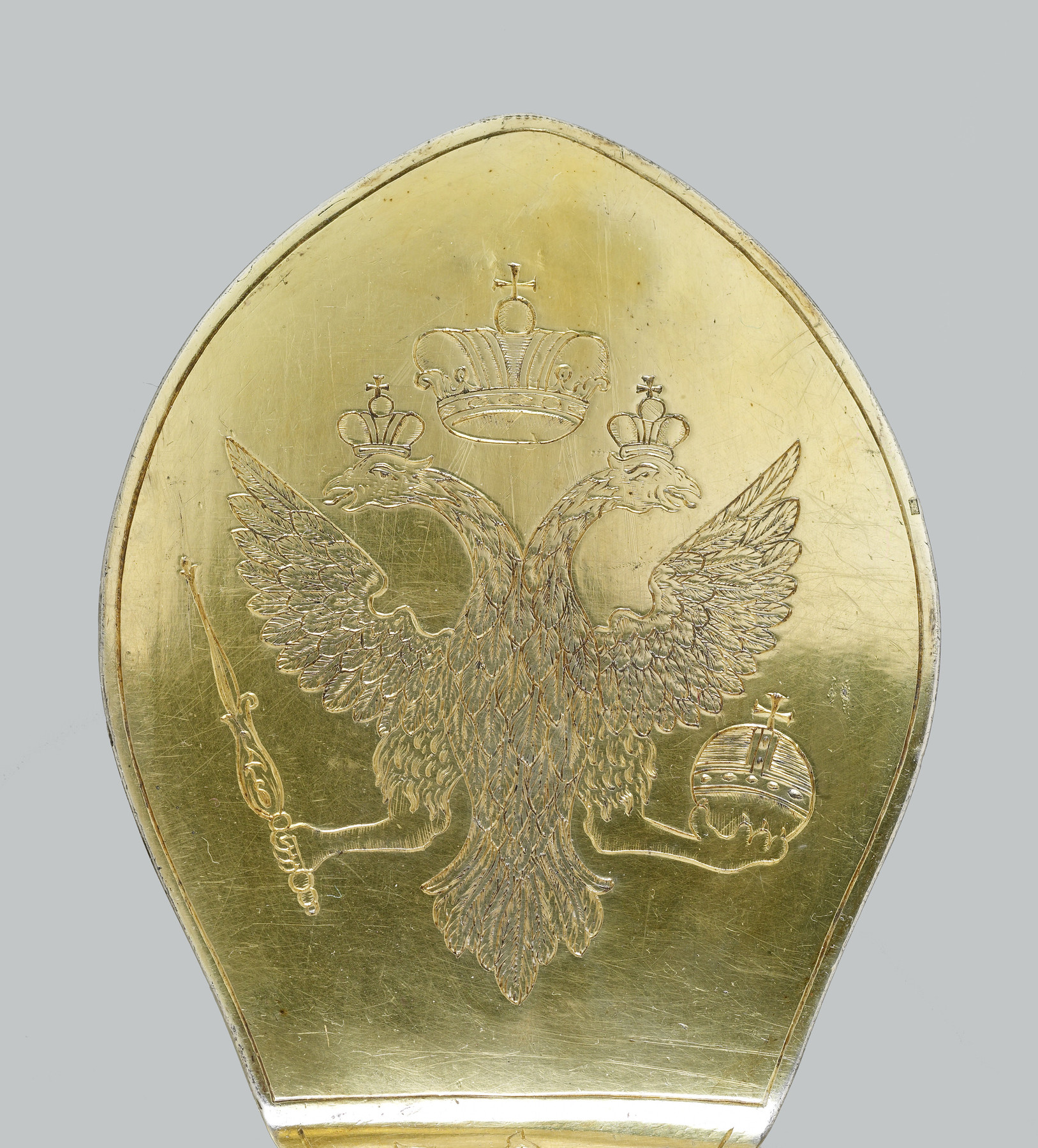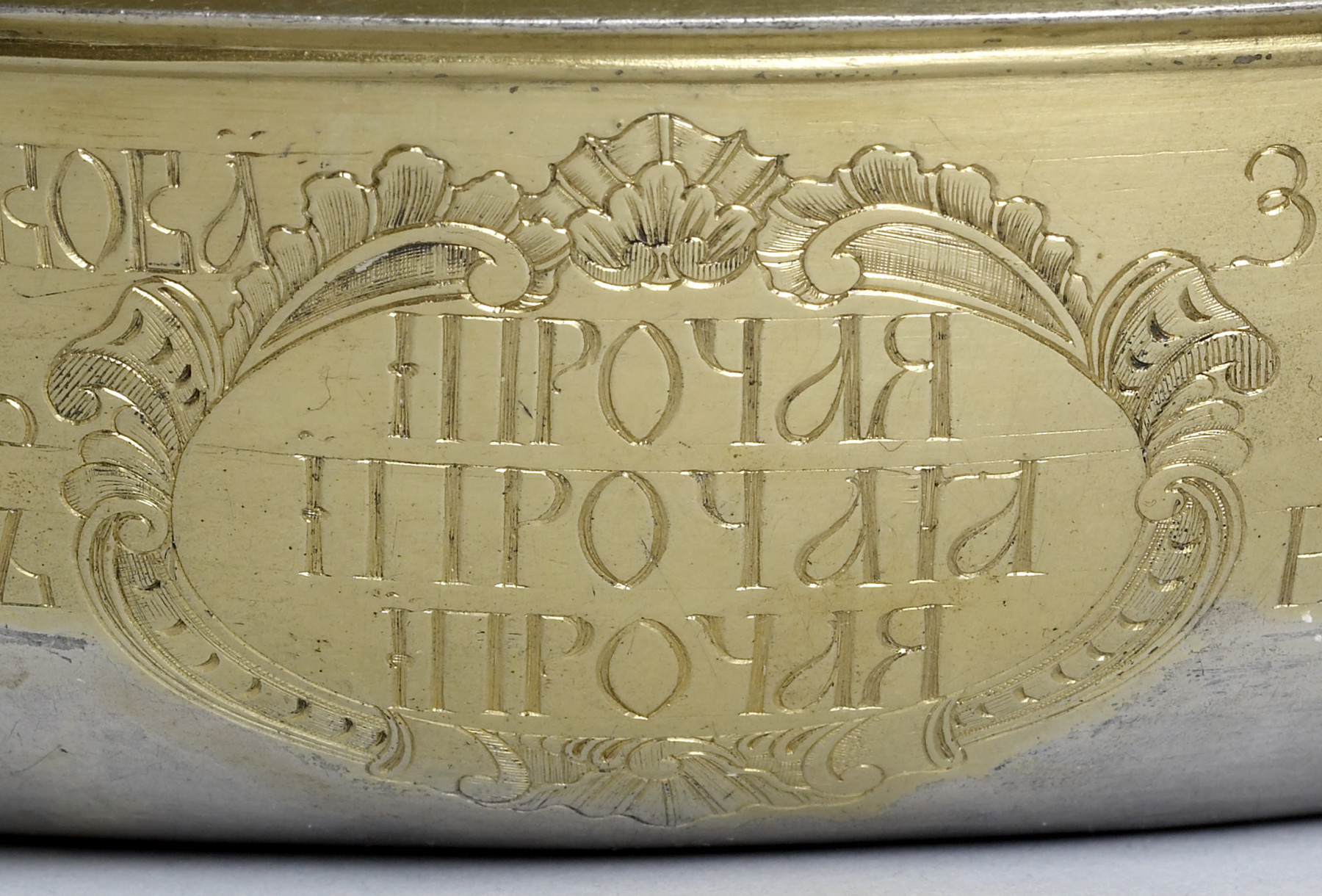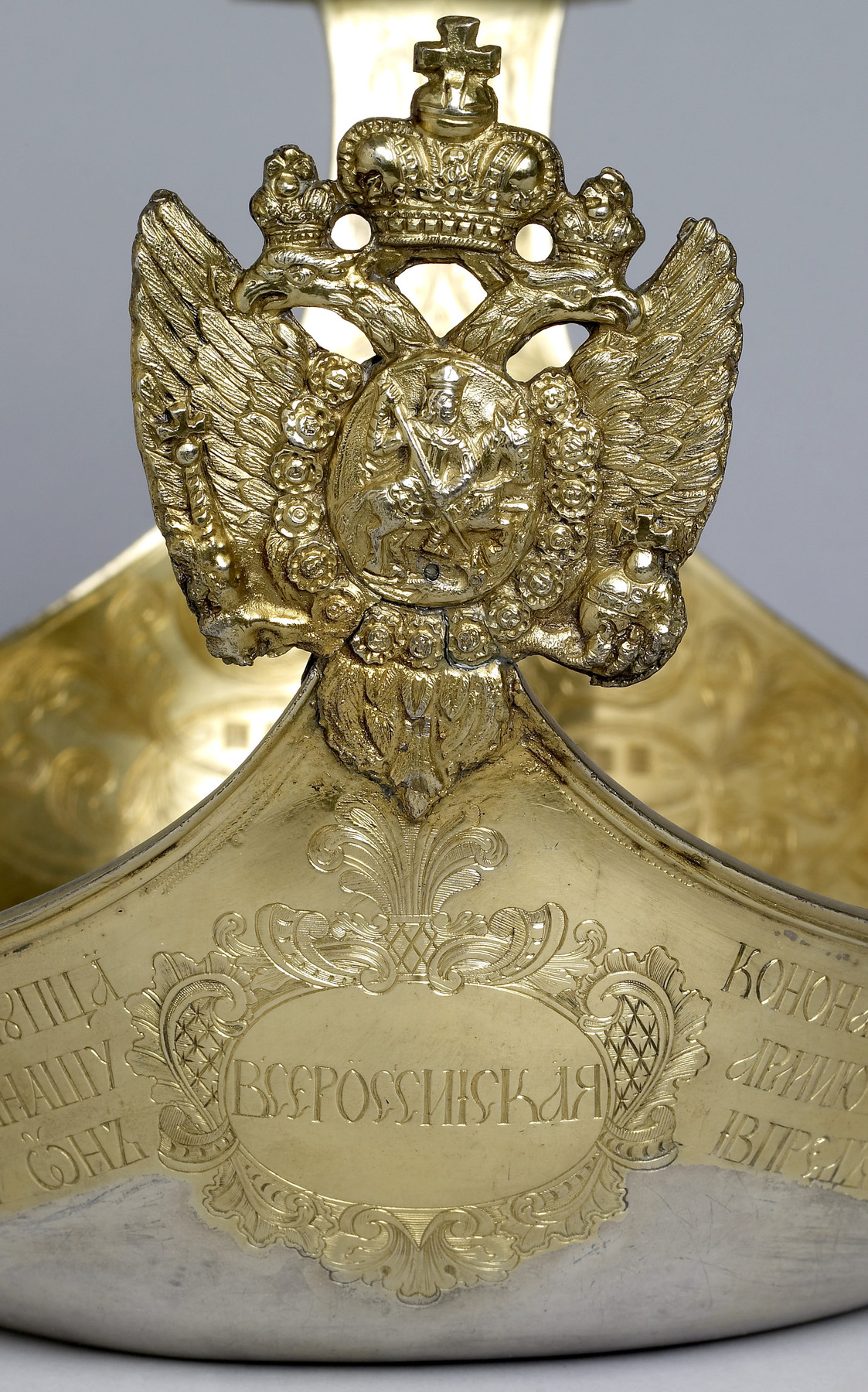Drinking Bowl (Kovsh)
(18th and 19th Centuries )
"Kovshi" are boat-shaped bowls or ladles, originally made of wood, which can be traced back to the 14th century.
This piece carries the double-headed eagle, state emblem of the Russian Empire. By the 18th century, large drinking bowls like this one were were no longer used as actual tableware but were rather awarded as gifts by the sovereign and proudly displayed at home by their recepients.
The inscription notes that Empress Elizabeth I (1709-1762) presented this sumptuous example to the merchant Konan Saveschkov, who had been a contractor for the army since 1752.
Inscription
Provenance
Provenance (from the French provenir, 'to come from/forth') is the chronology of the ownership, custody, or location of a historical object. Learn more about provenance at the Walters.
Alexandre Polovtsoff (Aleksandr Aleksandrovich Polovtsov), St. Petersburg and Paris, by purchase; Henry Walters, Baltimore, 1928, by purchase; Walters Art Museum, 1931, by bequest.
Exhibitions
| 2017-2018 | Fabergé and the Russian Crafts Tradition: An Empire's Legacy . The Walters Art Museum, Baltimore. |
| 1988-1989 | A Millennium of Christianity: Russian Art from The Walters Art Gallery. The Walters Art Gallery, Baltimore. |
Conservation
| Date | Description | Narrative |
|---|---|---|
| 8/24/2015 | Treatment | Cleaned |
| 8/24/2015 | Treatment | Cleaned to remove aged acrylic coating and silver tarnish in preparation for exhibition. |
| 8/24/2015 | Examination | Examined in preparation for exhibition. |
| 8/24/2015 | Examination | Examined |
Geographies
Russia, Moscow (Place of Origin)
Measurements
H: 6 7/16 × W: 13 1/16 × D: 8 5/16 in. (16.3 × 33.1 × 21.1 cm)
Credit Line
Acquired by Henry Walters, 1928
Location in Museum
Not on view
Accession Number
In libraries, galleries, museums, and archives, an accession number is a unique identifier assigned to each object in the collection.
In libraries, galleries, museums, and archives, an accession number is a unique identifier assigned to each object in the collection.
57.799

